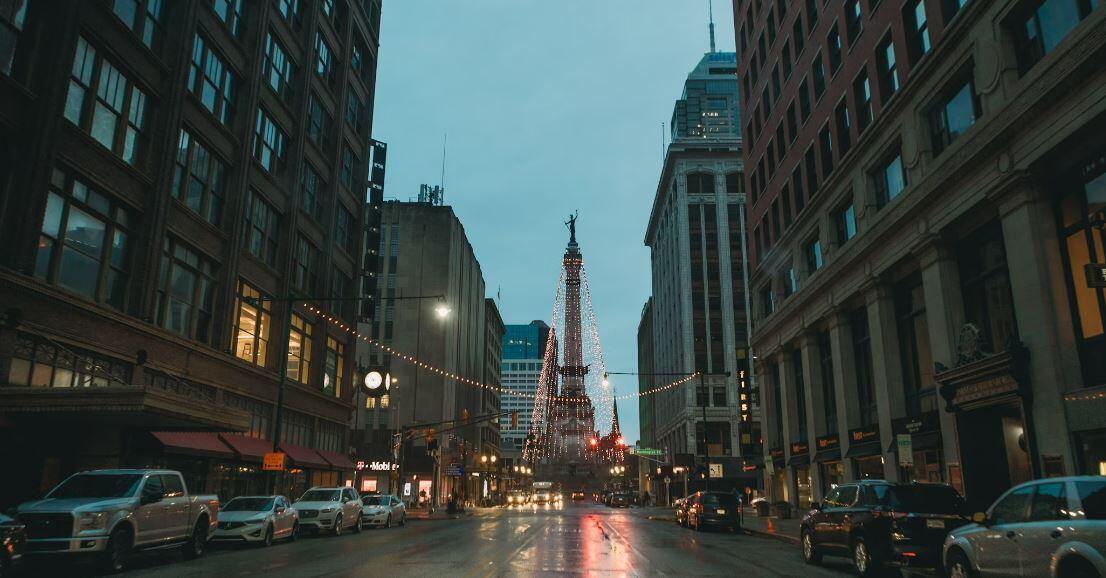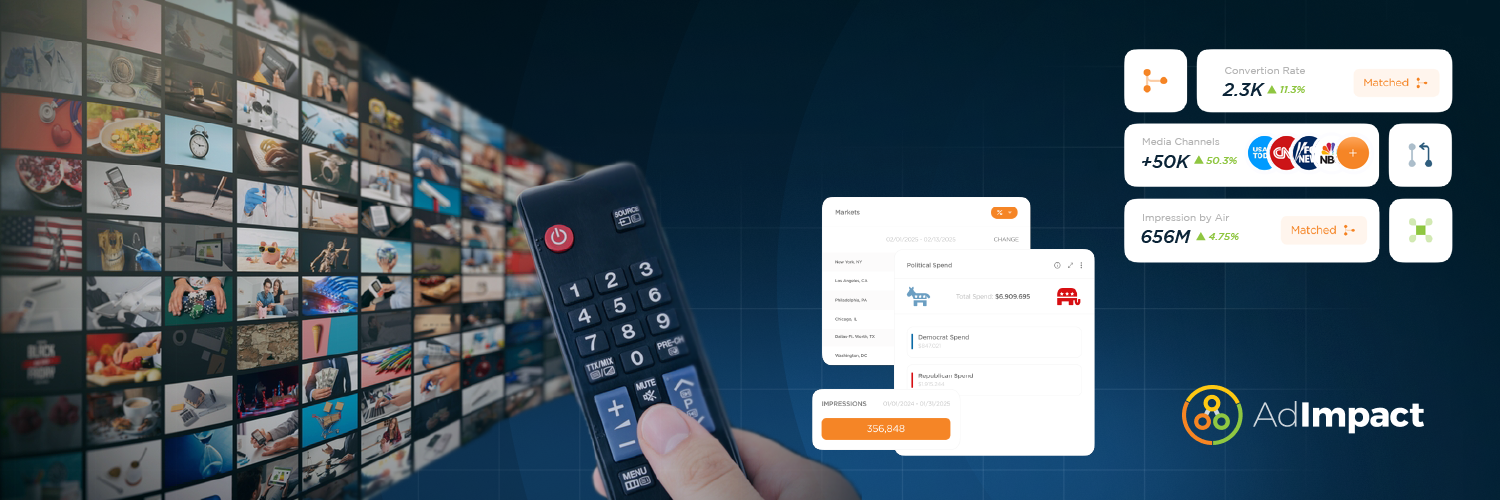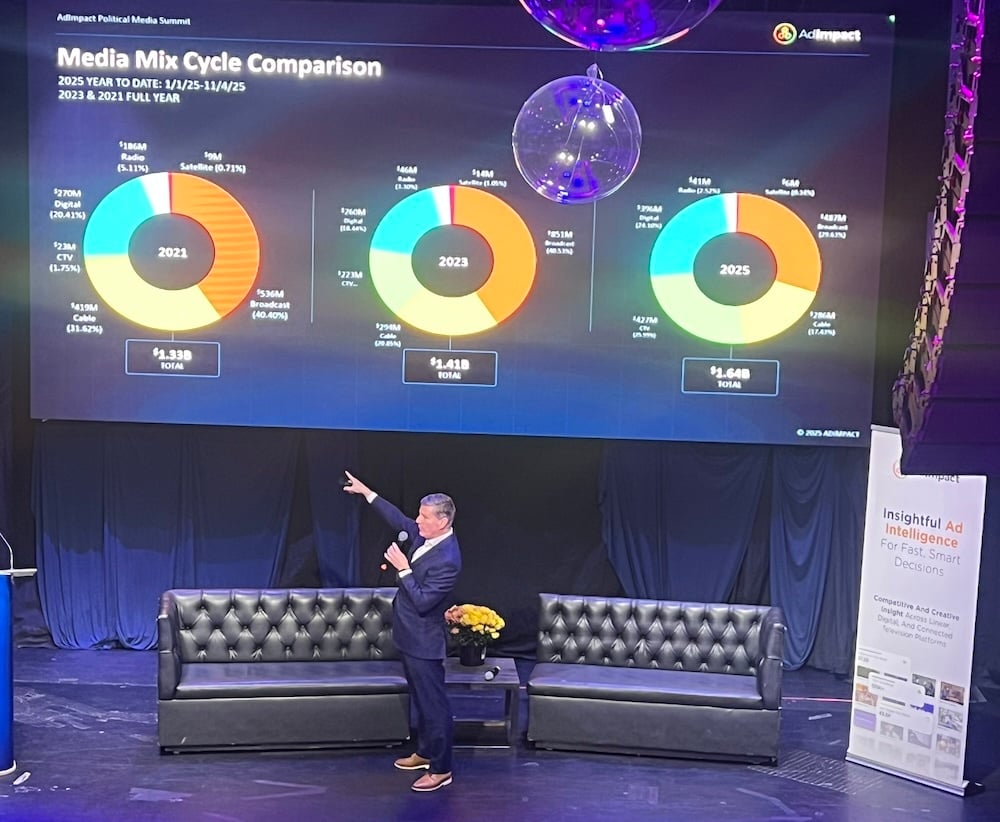Written by Nate Schwartz and Ethan Mort
Indiana has seen competitive spending for races up and down the ballot heading into tomorrow’s primary election day. There has been $98M in spending ahead of the Hoosier State’s primaries, which ranks fifth in most non-Presidential spending in any state to date this cycle.
Indiana’s gubernatorial primary makes up a plurality (46%) of the state’s primary, while 49% is comprised by House and downballot spending. Even though there’s an open Indiana Senate election, only $4.7M has been spent on ads in the Senate primary election.
Gubernatorial Primary
The gubernatorial primary has seen $45.1M in ad spending, making it the most expensive gubernatorial primary of the 2024 cycle, leading by a significant $17M margin over the next closest election (West Virginia). It ranks as the sixth most expensive gubernatorial primary of all time and the third most expensive in Indiana’s history.
Four candidates, Mike Braun, Suzanne Crouch, Eric Doden, and Brad Chambers, have received significant support in recent polls and are also the four candidates on the Indiana airwaves.
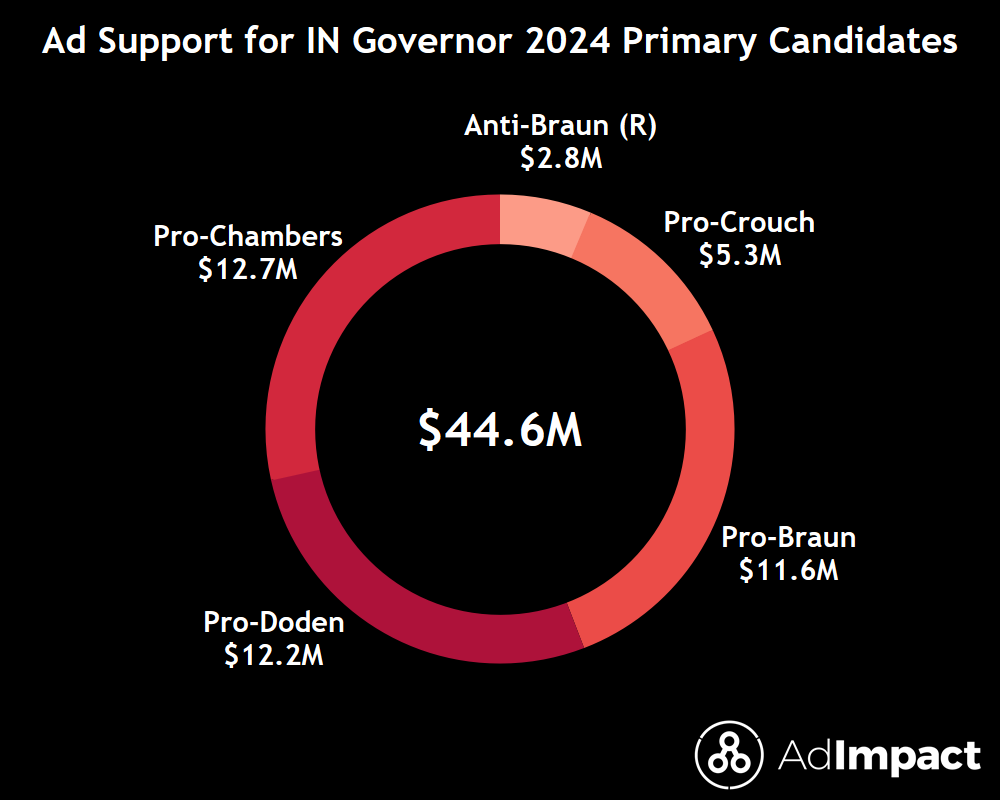
There is $38.7M in candidate expenditure, accounting for 86% of the election’s spending. Brad Chambers is the leading advertiser, spending $12.7M. Eric Doden is right behind, spending $12.2M. They both have an equal share of voice in the Indianapolis market: Chambers and Doden make up 28.4% and 27.4% of the $20.7M in market spending, respectively. Doden has a greater share of voice in most other markets, but Chambers has outspent Doden by $588K on digital platforms.
The third leading candidate, current U.S. Senator Mike Braun, has spent $8.6M. He is consistently third in share of voice across most markets, behind Doden and Chambers. Braun has seen $12.2M in ad support when factoring in issue group spending, just behind Chambers and Doden. Hoosier Hope has spent $3.6M in support of Braun.
The last candidate to spend, current lieutenant governor Suzanne Crouch, has spent $5.2M. Despite having approximately $7M less in ad support, Crouch leads all candidates in digital spending. Her campaign has spent $705K on digital platforms, $64K more than Chambers.
House Primaries
Spending across Indiana’s House primaries have surged due to three House seats, each rated as Safe Republican by Cook Political Report, with openings due to incumbents retiring (IN-06 and IN-08) and an incumbent leaving office to run for higher office (IN-03). With these developments, Indiana’s House primaries have seen a combined total of $25.5M in ad spending, a 728% increase from 2022, and 1,396% increase from 2020. With many of these districts firmly Republican, Democratic advertisers make up less than 1% of spending in this year’s primary contests across the Hoosier state. Four districts, IN-08 ($7.6M), IN-06 ($6.9M), IN-03 ($6M) and IN-05 ($4.9M) make up nearly all total House primary spending in Indiana.
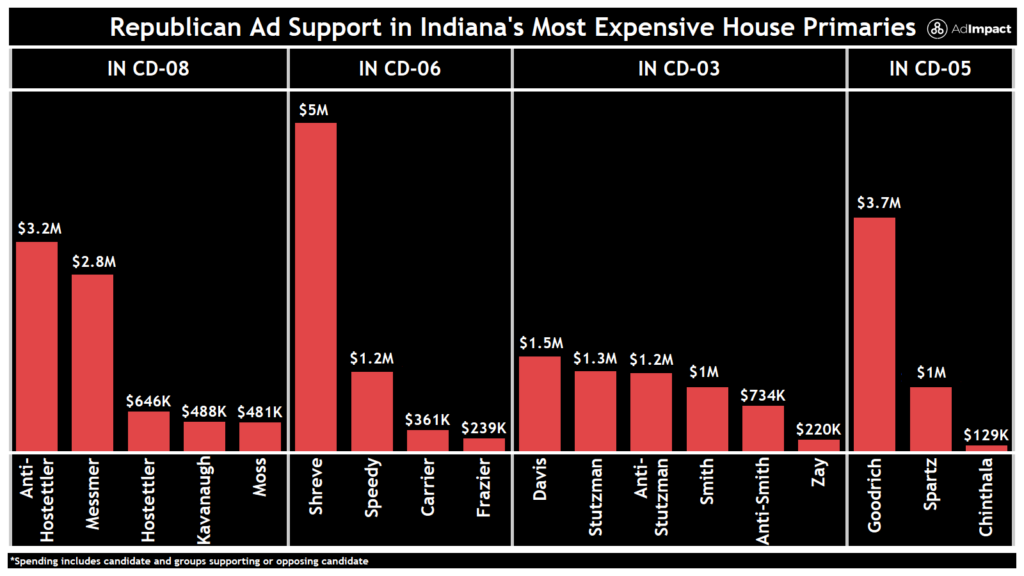
A historic $7.6M was spent in the primary for Indiana’s 8th District, making it the most expensive House primary in Indiana’s history. This primary attracted seven different Republican issue groups, which accounted for 78% of all spending in the District. Two issue groups aimed at John Hostettler: United Democracy Project ($1.7M) and America Leads Action Inc. ($1.6M) and In contrast, in lieu of Hostettler not spending anything himself, two groups have spent in his support: America Leadership PAC ($362K) and Protect Freedom PAC ($283K). Meanwhile, Mark Messmer has received ad support from RJC Victory Fund ($1.1M), Defend American Jobs ($454K) and America’s First Freedoms ($411K).
Ad spending in the Third District has also been heavily influenced by Republican issue groups, with 62% of spending ($6M) coming from outside groups. Club for Growth Action, and Club for Growth aligned group, House Freedom Action, invested heavily in this district. The Club spent $733K attacking Wendy Davis and Tim Smith, and House Freedom Action spent $323K supporting Marlin Stutzman. Other issue groups in the district include Protect Freedom PAC ($462K) supporting Stutzman, WFW Action Fund ($865K) supporting Davis, and America Leads Action ($1.2M) attacking Stutzman.
In terms of spending on traditional platforms, issue groups did not enter the fray in the primary contests for the Fifth and Sixth Districts. The primary for the Sixth District saw $6.9M come from four different candidates, Jefferson Shreve ($5M), Mike Speedy ($1.2M), Jamison Carrier ($361K), Bill Frazier ($239K). The Fifth District is the only one in Indiana in which an incumbent finds themselves in a competitive primary. Early last year, Victoria Spartz announced she would not seek re-election. However, she reversed her decision to retire last February. She now finds herself against an opponent who had the airwaves all to himself from September to February. Before Spartz jumped back into the race, Chuck Goodrich built up a $642K ad spending advantage over Spartz. He ended up with a 3:1 spending advantage over Spartz at $3.7M to Spartz’ $1M. Goodrich exclusively aired positive ads until Spartz jumped back into the race. On March 8th, Goodrich aired his first broadcast TV ad attacking Ukrainian-born Spartz on her “focus on Europe’s problems”. He later expanded on this attack two weeks later releasing an ad focusing on Spartz’ previous support of aid to Ukraine.
The top messaging themes across TV ads for Indiana’s House primaries were immigration, Donald Trump, Joe Biden, law enforcement, China, and crime. Immigration played a large role in messaging for these primaries, with this issue appearing in over 18,000 TV ad airings from 21 different advertisers. Stutzman, Kavanaugh, Messmer, Shreve, and Speedy all released ads mentioning they were pro-life.
Did you know Pennsylvania had their primaries a few weeks ago? Read about the spending and messaging we tracked across the Keystone State's primaries here:


